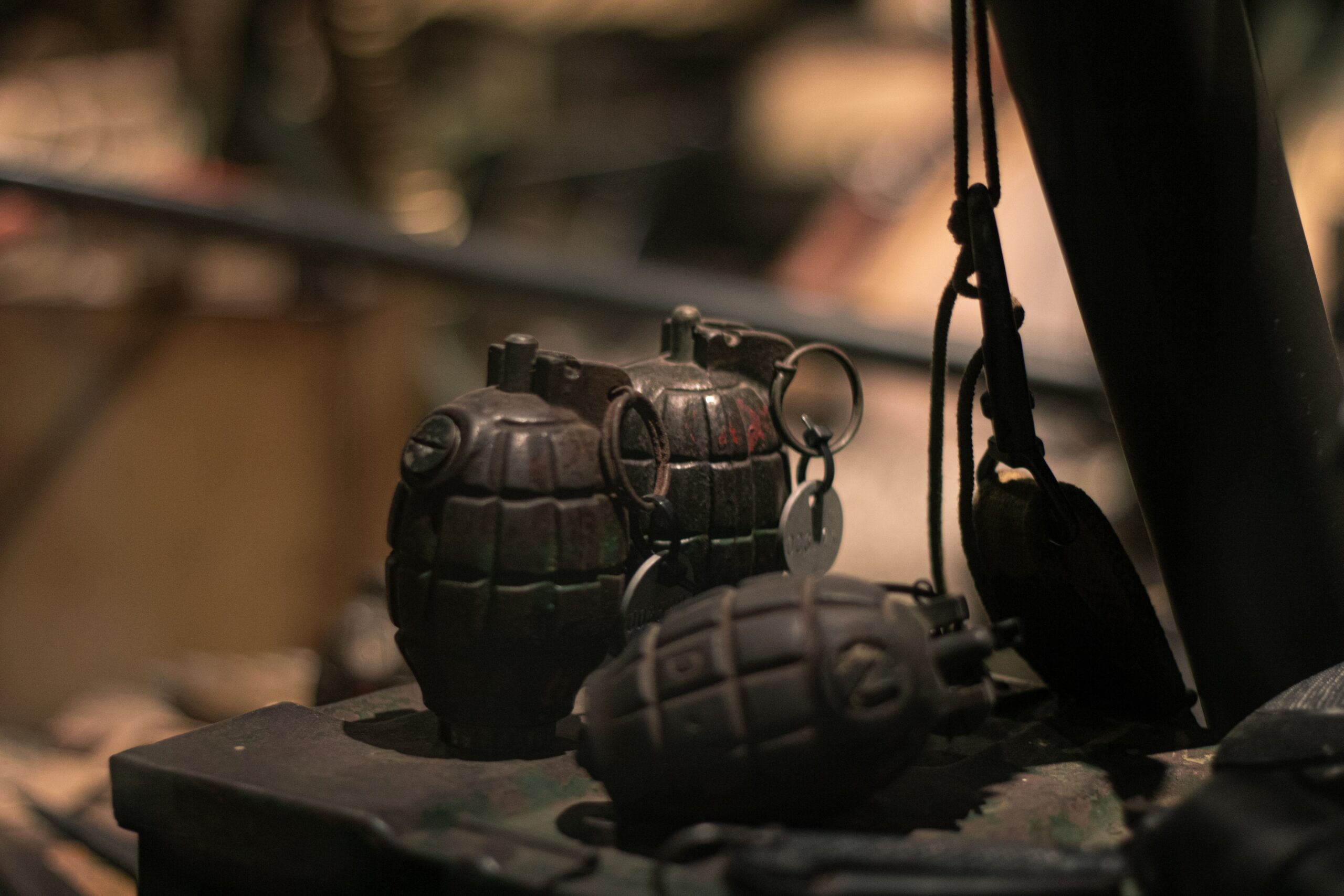An interview with International Security and Defense Policy expert István Mihály Király about the tactics and weapons used by Hamas in the 2023 Hamas–Israel conflict.
What kind of weapons did Hamas use during the recent offensive?
The recent offensive launched by Hamas saw the deployment of a range of weapons, reflecting their evolving capabilities. Primarily, they utilized a mix of rockets, mortars, man-portable air defense systems (MANPADS), small UAV-s, small arms, and vehicles that are typically in civil usage, like motorbikes and motorized paragliders, boats, bulldozers.
In the context of the recent offensive, is there a notable qualitative shift in weapons and tactics used by Hamas?
Regarding the weapons themselves, there is no fundamental qualitative shift. However, regarding the tactics, there is a notable change. First of all, compared to other terrorist attacks conducted by Hamas, this one was a kind of a “joint operation” in which all “branches” of the military capability of Hamas have taken part, and the attack was quite sophisticated. The tactic had basically three pillars.
-
- They launched a huge number of rockets in a relatively very short period, which, on the one hand, overloaded the Iron Dome system, and, on the other hand, engaged the attention of the IDF.
- They used small UAVs to drop ammunition (learned it from the war in Ukraine) to the Israeli surveillance facilities near the border – so they blinded the IDF.
- They transported terrorists to Israeli territory by land (the border fence was dismantled with the help of bulldozers), sea (by vessels) and air (motorized paragliders)
How do you assess the alleged use of North Korean weapons?
Unfortunately, it is not something that was not known previously.[1] North Korea has long supported Palestinian militant groups; there was evidence in the past proving that Hamas possesses North Korean weapons, like the F-7 (the North Korean version of Soviet RPG-7), Bulsae ATGM, or Type 58 (the North Korean version of Kalashnikov). But of course, the presence of such weapons in the hands of Hamas raises questions about illicit arms trade networks and the potential involvement of third-party actors in arming non-state groups. Further investigation is required to confirm the origin and channels through which these weapons reached Hamas, but there is a high probability that these weapons got into the Gaza Strip with the help of Iran. Iran is the main supporter of Hamas regarding weaponry.
What do we know about Hamas manufacturing its own weapons? Can you provide us with a description of know-how or know-how transfer from third countries?
Hamas has demonstrated a capacity to manufacture its own weapons, including rockets and mortars. While they have relied on external support in the past, they have also shown a degree of self-sufficiency through reverse engineering and local production. On the one hand, this highlights the importance of monitoring the transfer of dual-use technologies and materials to prevent further proliferation, but on the other hand, it won’t be enough to prevent Hamas from manufacturing weapons, because the terrorist organization turns practically everything into weapons. They dig out waterpipes to build rockets from them, recycle the ruins (sheet metal and metal pipes, rebar, electrical wiring) left from Gazan infrastructure after the Israeli air and artillery strikes, and even use unexploded Israeli munitions for their explosive material and other parts.
Behind the know-how and the know-how transfer, we can find Iran – again. The IRGC (Islamic Revolutionary Guard Corps) has been giving Hamas engineers weapons training for almost two decades[2], so today, they are capable of producing artillery shells, rockets, and mortars – but not advanced weapons. The fact that they – as far as we know – don’t have guided missiles, shows the limitations of the “Gazan weapon industry,” but let there be no doubt that this could be the next goal, just like in the case of Hezbollah and the Iranian backed militias.
How significant is the Hamas–Iran nexus in terms of weapon supplies and financing?
As mentioned earlier, the Hamas-Iran nexus plays a crucial role in terms of weapon supplies and financing. Iran has been a consistent supporter of Hamas, providing not only financial aid but also weapons and technical expertise. This relationship strengthens Hamas’s military capabilities and underscores the broader geopolitical dynamics at play in the region.
Although, according to the US, there is no evidence yet that underpins the direct involvement of Iran in this horrific terror attack, it is clear that without the Iranian financial and political support, as well as Iranian weapon supplies, Hamas probably wouldn’t have able to execute such an attack.
It is also remarkable that Hamas attacked Israel at a time when no extraordinary events happened in the Palestinian-Israeli relationship; however, normalization between Saudi Arabia and Israel was said to be within reach. Of course, Hamas is also against the improvement of Saudi–Israeli relations, but Iran has more to lose. Therefore, we can say the Hamas–Iran nexus is very important, not just in terms of weapon supplies and financing, but also regarding decision-making.
[1] Bruce E. Bechtol Jr.: North Korean Military Proliferation in the Middle East and Africa – Enabling Violence and Instability (pp. 80-101. University Press of Kentucky, 2018.
[2] Talal ’Atrissi:Hamas and the Muslim World: Case Studies of Turkey and Iran. In Dr. Mohsen Mohammad Saleg (Ed.) Islamic Resistance Movement (Hamas) Studies of Thought & Experience (pp. 354-370). Beirut – Lebanon, Al-Zaytoina Centre For Studies & Consultations, 2017.


